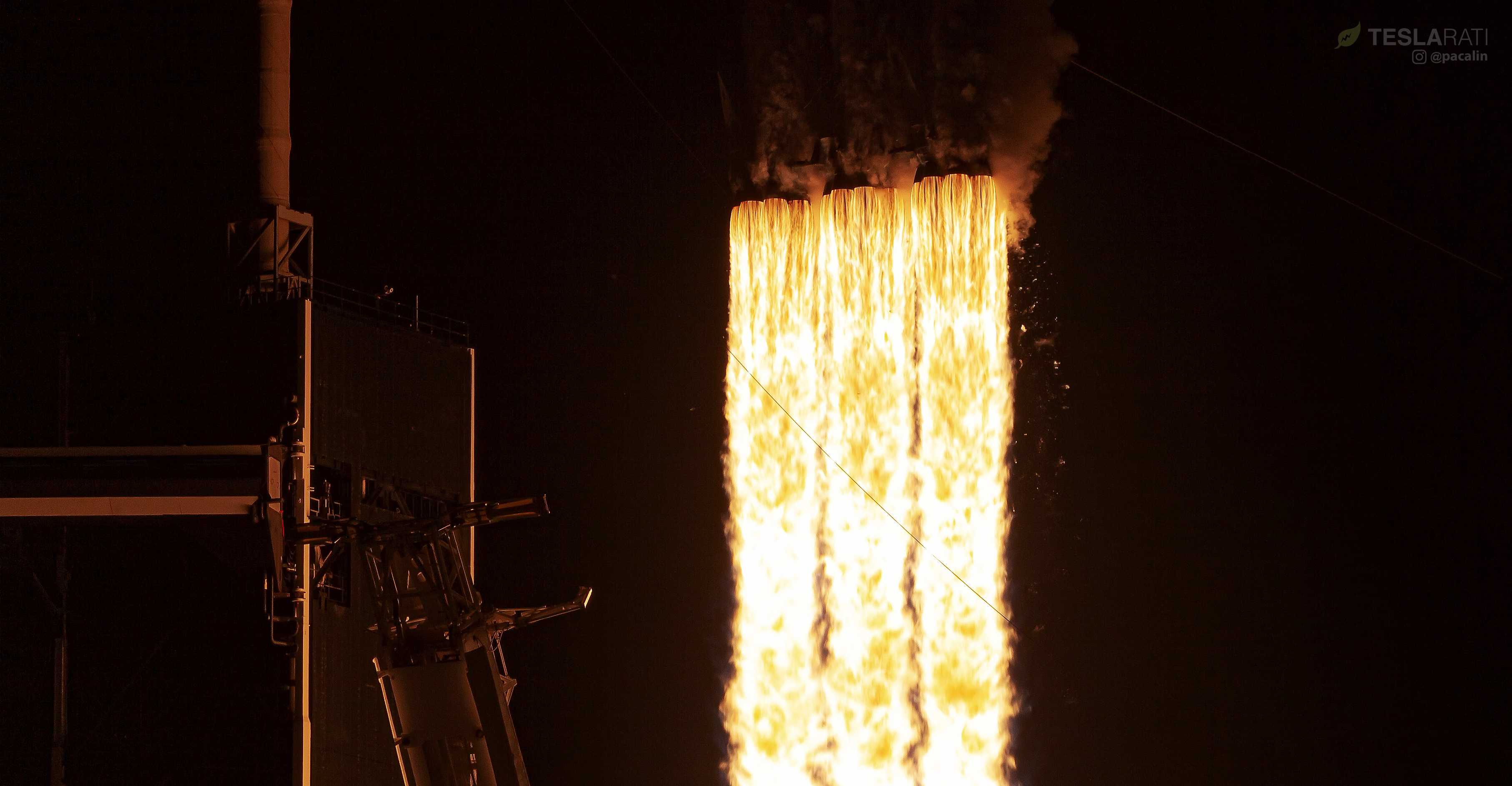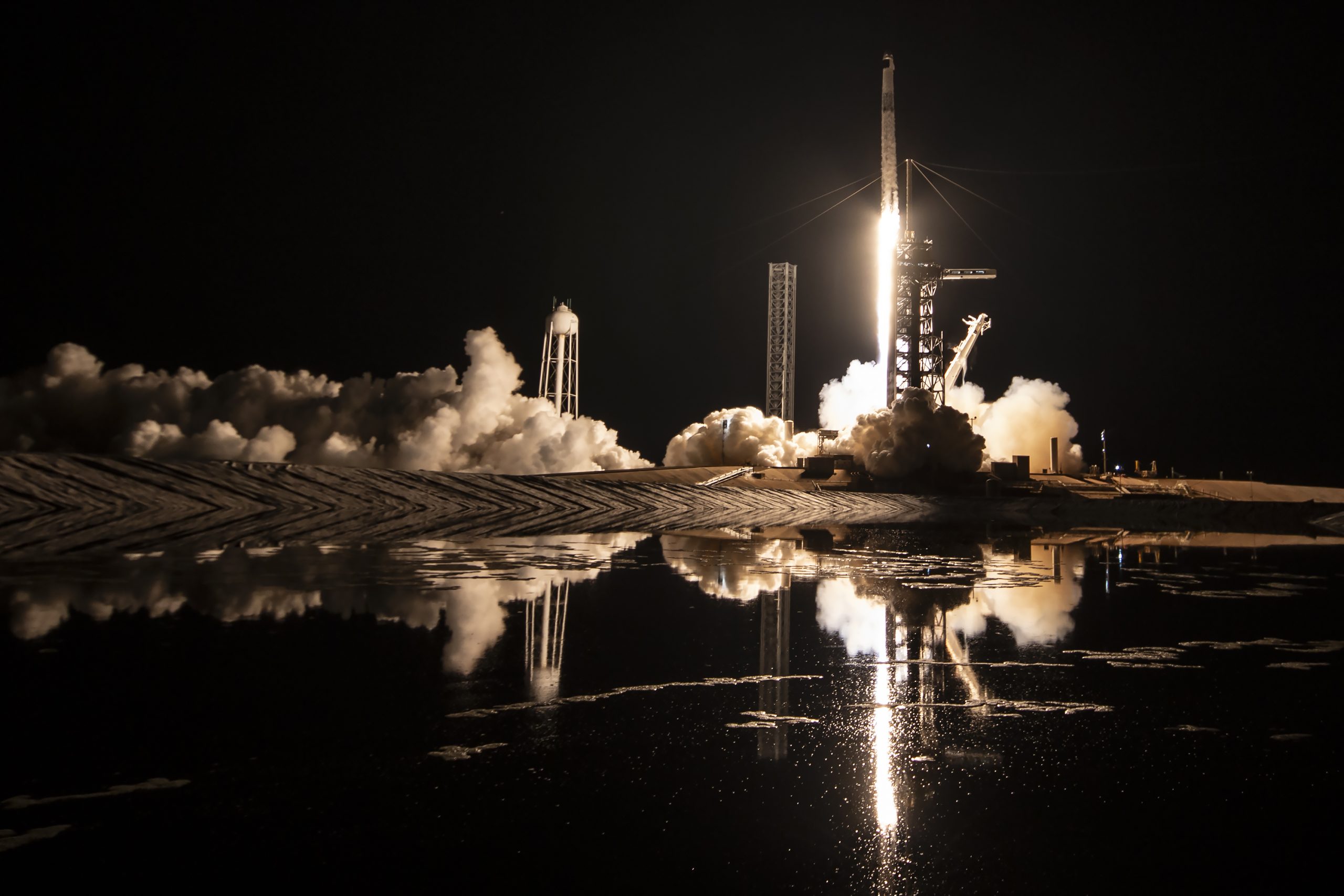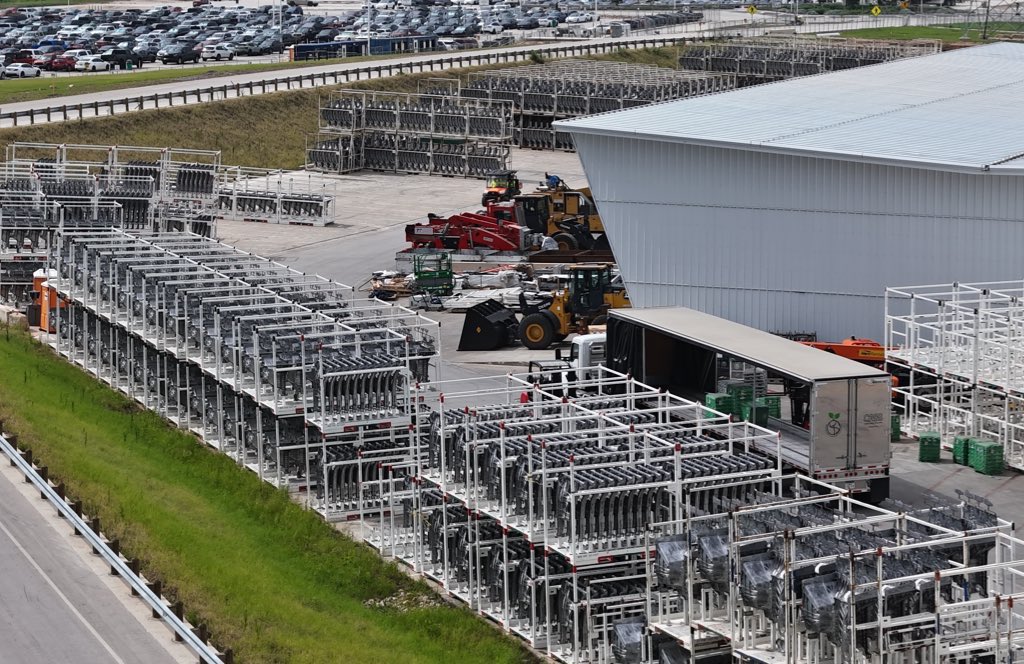

News
SpaceX’s first flight-proven Falcon Heavy Block 5 launch and landing in photos
Aside from center core B1057’s unfortunate demise, Falcon Heavy’s third launch was a huge success, placing two dozen satellites into three separate orbits over the course of nearly four hours.
Described as SpaceX’s most challenging launch ever, successfully completing the mission – known as Space Test Program-2 – has hopefully helped to guarantee that the US Department of Defense will fully certify Falcon Heavy for high-value military launches. SpaceX already has two such missions on its 2020/2021 launch manifest, although both are dependent upon the US Air Force deciding that the company’s newest rocket is ready. Teslarati photographers Pauline Acalin and Tom Cross were both on site to capture Falcon Heavy’s spectacular third launch, hopefully a sign of things to come as space agencies and commercial markets begin to warm to the new launch capabilities offered by the SpaceX rocket.
With the frenzied launch and landing now complete, we can look back through an array of photos produced over the course of Falcon Heavy’s STP-2 mission. Tom and Pauline (as well as dozens of other press photographers) endured hellish Florida humidity, heat, and mosquitos from start to finish, thankfully pushing through the environment to capture amazing photos of Falcon Heavy before and during launch.
STP-2 marked the first time two flight-proven Block 5 Falcon Heavy boosters were simultaneously re-launched on a later FH mission, as well as the first time the US military has flown a dedicated SpaceX mission with any kind of flight-proven Falcon – let alone two of them. Both side boosters performed flawlessly, while – for the third time in a row – the new center core was sadly unable to return to port aboard drone ship Of Course I Still Love You (OCISLY).




Incredibly, despite the fact that SpaceX had the USAF, NASA, and the future of Falcon Heavy’s US military launch career hanging on the line, the company’s engineers and technicians were able to pull off quite the feat, turning side boosters B1052 and B1053 around for a second launch just 74 days after their April 11th debut. In other words, despite the countless hurdles, the dual side booster reuse tied and nearly beat SpaceX’s current reusability records (71 days overall, 74 days for Block 5). This bodes extremely well for record-smashing rapid refuses of Falcon 9 boosters in the near future.
With their second launches now snuggly under their belts, B1052 and B1053 will very likely be converted into regular Falcon 9 boosters and enter into circulation as part of SpaceX’s flight-proven Falcon 9 fleet. With the ex-side boosters, that fleet could soon stand at an impressive eight flightworthy rockets, all nearing readiness or already ready for their next launches.


Falcon Heavy’s second successful launch in 11 weeks is nevertheless a touch bittersweet, as the rocket’s next (fourth) launch – barring mystery interim missions – is scheduled no earlier than fall 2020, 15-18 months from now. After that Q4 2020 launch, known as AFSPC-44, Falcon Heavy has another three firm contracts with launches in 2021, followed by a tentative fourth contract with Inmarsat that still needs to be finalized. For now, we’ll have to savor Falcon Heavy’s STP-2 launch – likely the last for quite some time.
Check out galleries of Pauline and Tom’s excellent photos of the massive SpaceX rocket below.

Falcon Heavy readies for its second launch in 11 weeks, June 24th. (Pauline Acalin) 
Falcon Heavy’s metal-capped payload fairing glints in the sun, loaded with 24 satellites as part of the USAF STP-2 rideshare mission. (Pauline Acalin) 
Falcon Heavy Flight 3 bares one of its two sooty, flight-proven side boosters. (Pauline Acalin) 
The weather in Florida was horrifically hot and humid, as usual. (Tom Cross) 
(NASA – Kim Shiflett) 
(Pauline Acalin)

A long-exposure captured this spectacular view of Falcon Heavy’s launch, side booster and core stage separation, upper stage ignition, side booster reentry burns, and side booster landing burns – all in one frame. (Tom Cross) 
Liftoff! (Tom Cross) 
Falcon Heavy lifts off from Pad 39A on its third launch ever. Sadly, center core B1057 was unable to stick its drone ship landing. (Tom Cross) 
Pad 39A’s Crew Access Arm (CAA) glows blue as Falcon Heavy takes flight. (Tom Cross) 
A remote camera set up by Teslarati photographer Pauline Acalin captured this incredible view of all 27 Merlin 1D engines powering Falcon Heavy’s first stage. (Pauline Acalin)
Want to remember the awesomeness of Falcon Heavy every single day? Consider a limited-edition set of high-quality prints, signed by both Teslarati photographers to commemorate the rocket’s inaugural Starman launch.
News
These Tesla, X, and xAI engineers were just poached by OpenAI
The news is the latest in an ongoing feud between Elon Musk and the Sam Altman-run firm OpenAI.

OpenAI, the xAI competitor for which Elon Musk previously served as a boardmember and helped to co-found, has reportedly poached high-level engineers from Tesla, along with others from xAI, X, and still others.
On Tuesday, Wired reported that OpenAI hired four high-level engineers from Tesla, xAI, and X, as seen in an internal Slack message sent by co-founder Greg Brockman. The engineers include Tesla Vice President of Software Engineering David Lau, X and xAI’s head of infrastructure engineering Uday Ruddarraju, and fellow xAI infrastructure engineer Mike Dalton. The hiring spree also included Angela Fan, an AI researcher from Meta.
“We’re excited to welcome these new members to our scaling team,” said Hannah Wong, an OpenAI spokesperson. “Our approach is to continue building and bringing together world-class infrastructure, research, and product teams to accelerate our mission and deliver the benefits of AI to hundreds of millions of people.”
Lau has been in his position as Tesla’s VP of Software Engineering since 2017, after previously working for the company’s firmware, platforms, and system integration divisions.
“It has become incredibly clear to me that accelerating progress towards safe, well-aligned artificial general intelligence is the most rewarding mission I could imagine for the next chapter of my career,” Lau said in a statement to Wired.
🚨Optimistic projections point to xAI possibly attaining profitability by 2027, according to Bloomberg's sources.
If accurate, this would be quite a feat for xAI. OpenAI, its biggest rival, is still looking at 2029 as the year it could become cash flow positive.💰 https://t.co/pE5Z9daez8
— TESLARATI (@Teslarati) June 18, 2025
READ MORE ON OPENAI: Elon Musk’s OpenAI lawsuit clears hurdle as trial looms
At xAI, Ruddarraju and Dalton both played a large role in developing the Colossus supercomputer, which is comprised of over 200,000 GPUs. One of the major ongoing projects at OpenAI is the company’s Stargate program,
“Infrastructure is where research meets reality, and OpenAI has already demonstrated this successfully,” Ruddarraju told Wired in another statement. “Stargate, in particular, is an infrastructure moonshot that perfectly matches the ambitious, systems-level challenges I love taking on.”
Elon Musk is currently in the process of suing OpenAI for shifting toward a for-profit model, as well as for accepting an investment of billions of dollars from Microsoft. OpenAI retaliated with a counterlawsuit, in which it alleges that Musk is interfering with the company’s business and engaging in unfair competition practices.
Elon Musk confirms Grok 4 launch on July 9 with livestream event
News
SpaceX share sale expected to back $400 billion valuation
The new SpaceX valuation would represent yet another record-high as far as privately-held companies in the U.S. go.

A new report this week suggests that Elon Musk-led rocket company SpaceX is considering an insider share sale that would value the company at $400 billion.
SpaceX is set to launch a primary fundraising round and sell a small number of new shares to investors, according to the report from Bloomberg, which cited people familiar with the matter who asked to remain anonymous due to the information not yet being public. Additionally, the company would sell shares from employees and early investors in a follow-up round, while the primary round would determine the price for the secondary round.
The valuation would represent the largest in history from a privately-owned company in the U.S., surpassing SpaceX’s previous record of $350 billion after a share buyback in December. Rivaling company valuations include ByteDance, the parent company of TikTok, as well as OpenAI.
Bloomberg went on to say that a SpaceX representative didn’t respond to a request for comment at the time of publishing. The publication also notes that the details of such a deal could still change, especially depending on interest from the insider sellers and share buyers.
Axiom’s Ax-4 astronauts arriving to the ISS! https://t.co/WQtTODaYfj
— TESLARATI (@Teslarati) June 26, 2025
READ MORE ON SPACEX: SpaceX to decommission Dragon spacecraft in response to Pres. Trump war of words with Elon Musk
SpaceX’s valuation comes from a few different key factors, especially including the continued expansion of the company’s Starlink satellite internet company. According to the report, Starlink accounts for over half of the company’s yearly revenue. Meanwhile, the company produced its 10 millionth Starlink kit last month.
The company also continues to develop its Starship reusable rocket program, despite the company experiencing an explosion of the rocket on the test stand in Texas last month.
The company has also launched payloads for a number of companies and government contracts. In recent weeks, SpaceX launched Axiom’s Ax-4 mission, sending four astronauts to the International Space Station (ISS) for a 14-day stay to work on around 60 scientific experiments. The mission was launched using the SpaceX Falcon 9 rocket and a new Crew Dragon capsule, while the research is expected to span a range of fields including biology, material and physical sciences, and demonstrations of specialized technology.
News
Tesla Giga Texas continues to pile up with Cybercab castings
Tesla sure is gathering a lot of Cybercab components around the Giga Texas complex.

Tesla may be extremely tight-lipped about the new affordable models that it was expected to start producing in the first half of the year, but the company sure is gathering a lot of Cybercab castings around the Giga Texas complex. This is, at least, as per recent images taken of the facility.
Cybercab castings galore
As per longtime drone operator Joe Tegtmeyer, who has been chronicling the developments around the Giga Texas complex for several years now, the electric vehicle maker seems to be gathering hundreds of Cybercab castings around the factory.
Based on observations from industry watchers, the drone operator appears to have captured images of about 180 front and 180 rear Cybercab castings in his recent photos.
Considering the number of castings that were spotted around Giga Texas, it would appear that Tesla may indeed be preparing for the vehicle’s start of trial production sometime later this year. Interestingly enough, large numbers of Cybercab castings have been spotted around the Giga Texas complex in the past few months.
Cybercab production
The Cybercab is expected to be Tesla’s first vehicle that will adopt the company’s “unboxed” process. As per Tesla’s previous update letters, volume production of the Cybercab should start in 2026. So far, prototypes of the Cybercab have been spotted testing around Giga Texas, and expectations are high that the vehicle’s initial trial production should start this year.
With the start of Tesla’s dedicated Robotaxi service around Austin, it might only be a matter of time before the Cybercab starts being tested on public roads as well. When this happens, it would be very difficult to deny the fact that Tesla really does have a safe, working autonomous driving system, and it has the perfect vehicle for it, too.
-

 Elon Musk1 week ago
Elon Musk1 week agoTesla investors will be shocked by Jim Cramer’s latest assessment
-

 News2 weeks ago
News2 weeks agoTesla Robotaxi’s biggest challenge seems to be this one thing
-

 Elon Musk1 day ago
Elon Musk1 day agoElon Musk confirms Grok 4 launch on July 9 with livestream event
-

 News2 weeks ago
News2 weeks agoWatch the first true Tesla Robotaxi intervention by safety monitor
-

 News5 days ago
News5 days agoTesla Model 3 ranks as the safest new car in Europe for 2025, per Euro NCAP tests
-

 Elon Musk2 weeks ago
Elon Musk2 weeks agoA Tesla just delivered itself to a customer autonomously, Elon Musk confirms
-

 Elon Musk2 weeks ago
Elon Musk2 weeks agoElon Musk confirms Tesla Optimus V3 already uses Grok voice AI
-

 Elon Musk2 weeks ago
Elon Musk2 weeks agoxAI welcomes Memphis pollution results, environmental groups push back

















